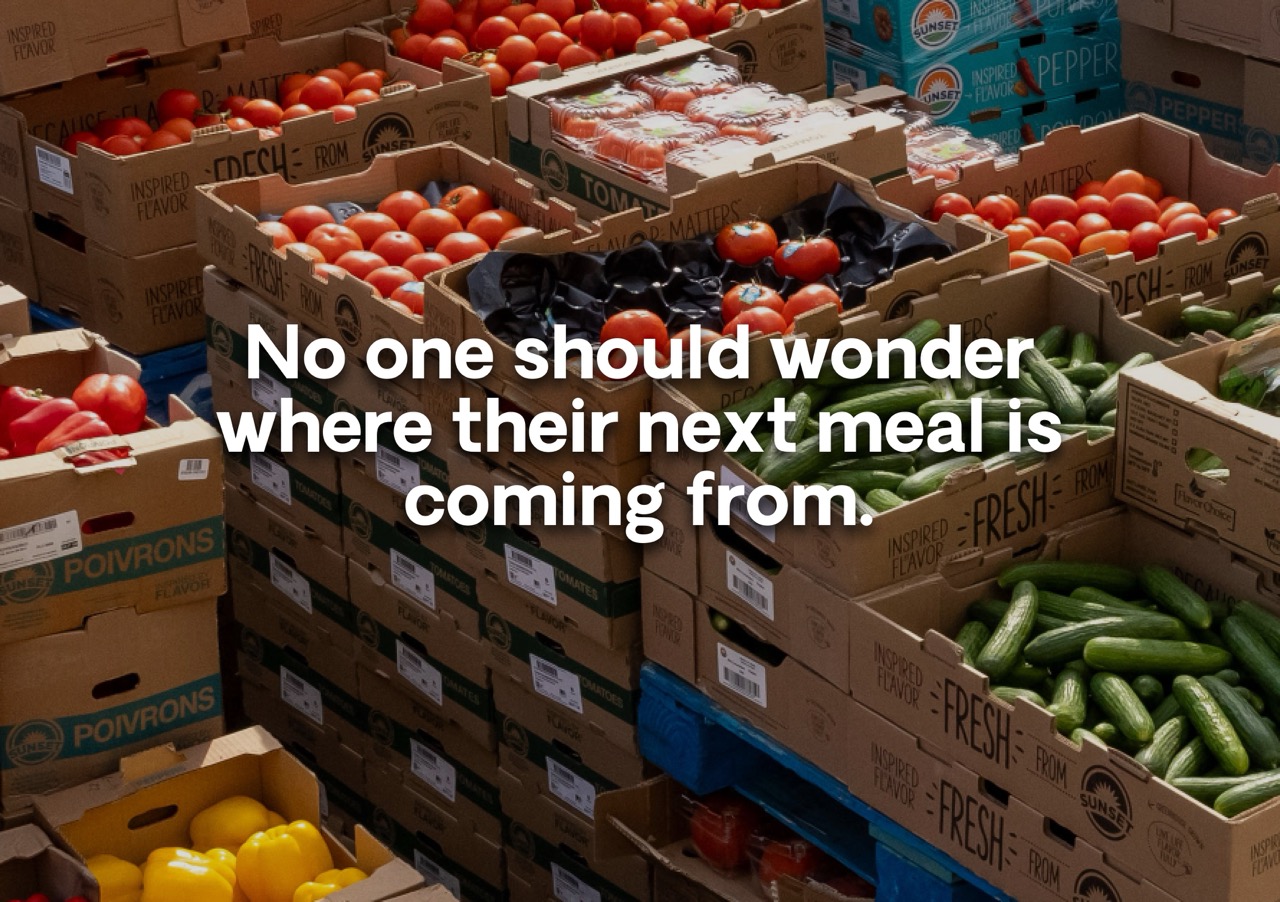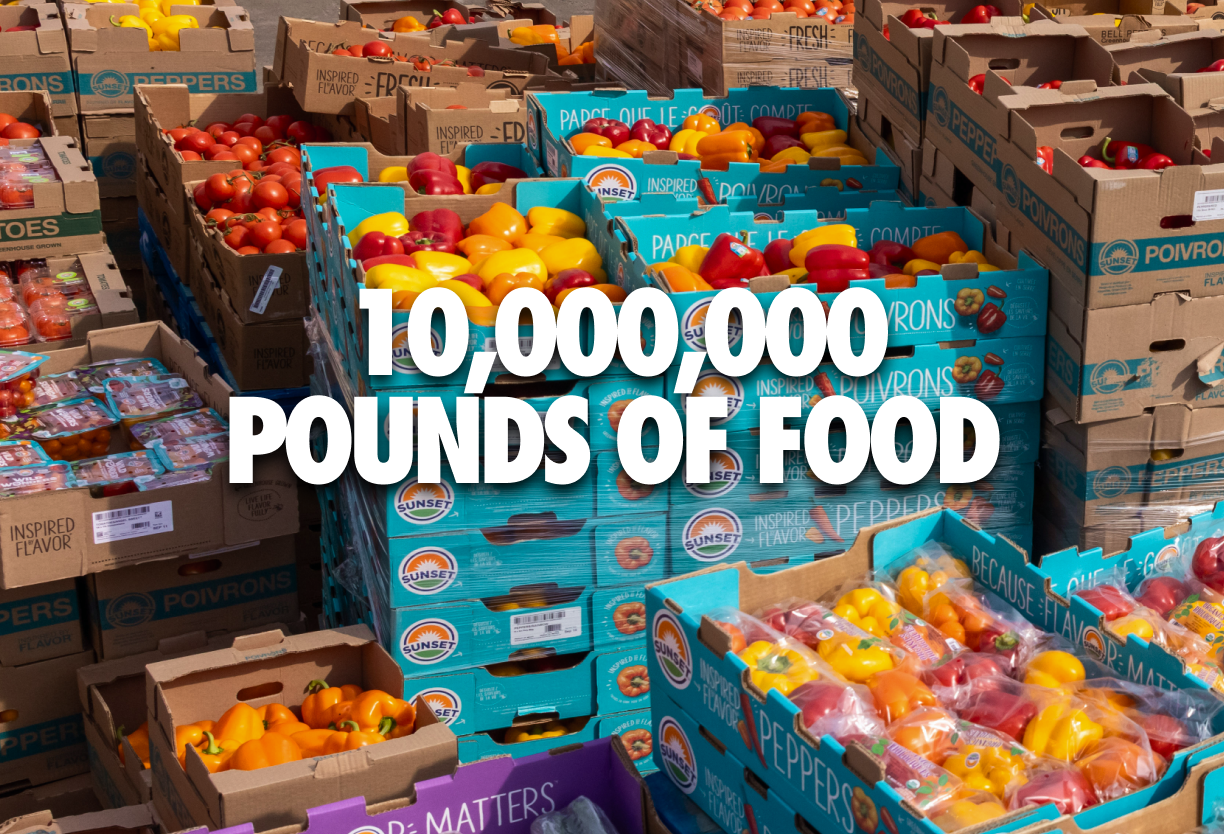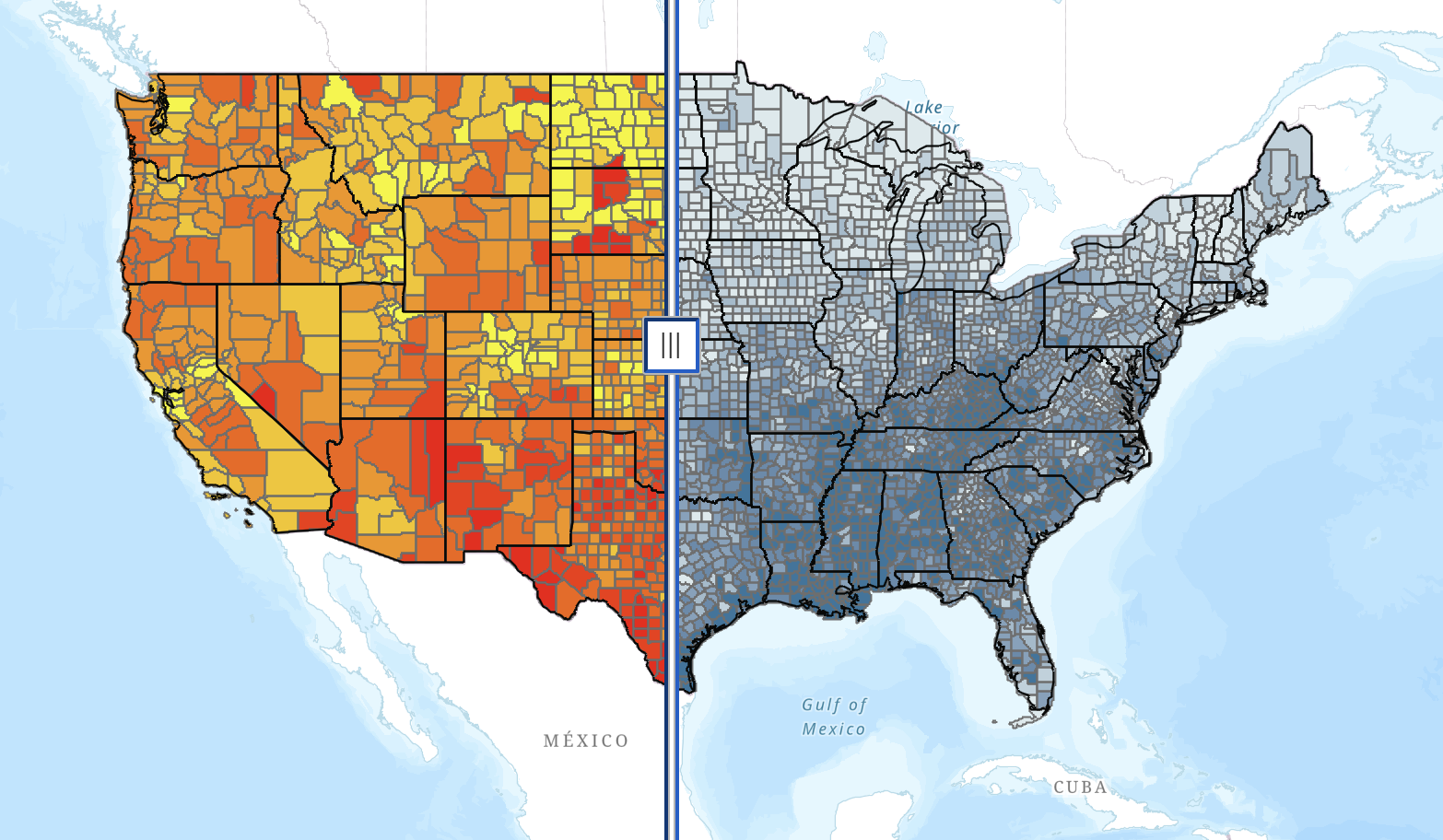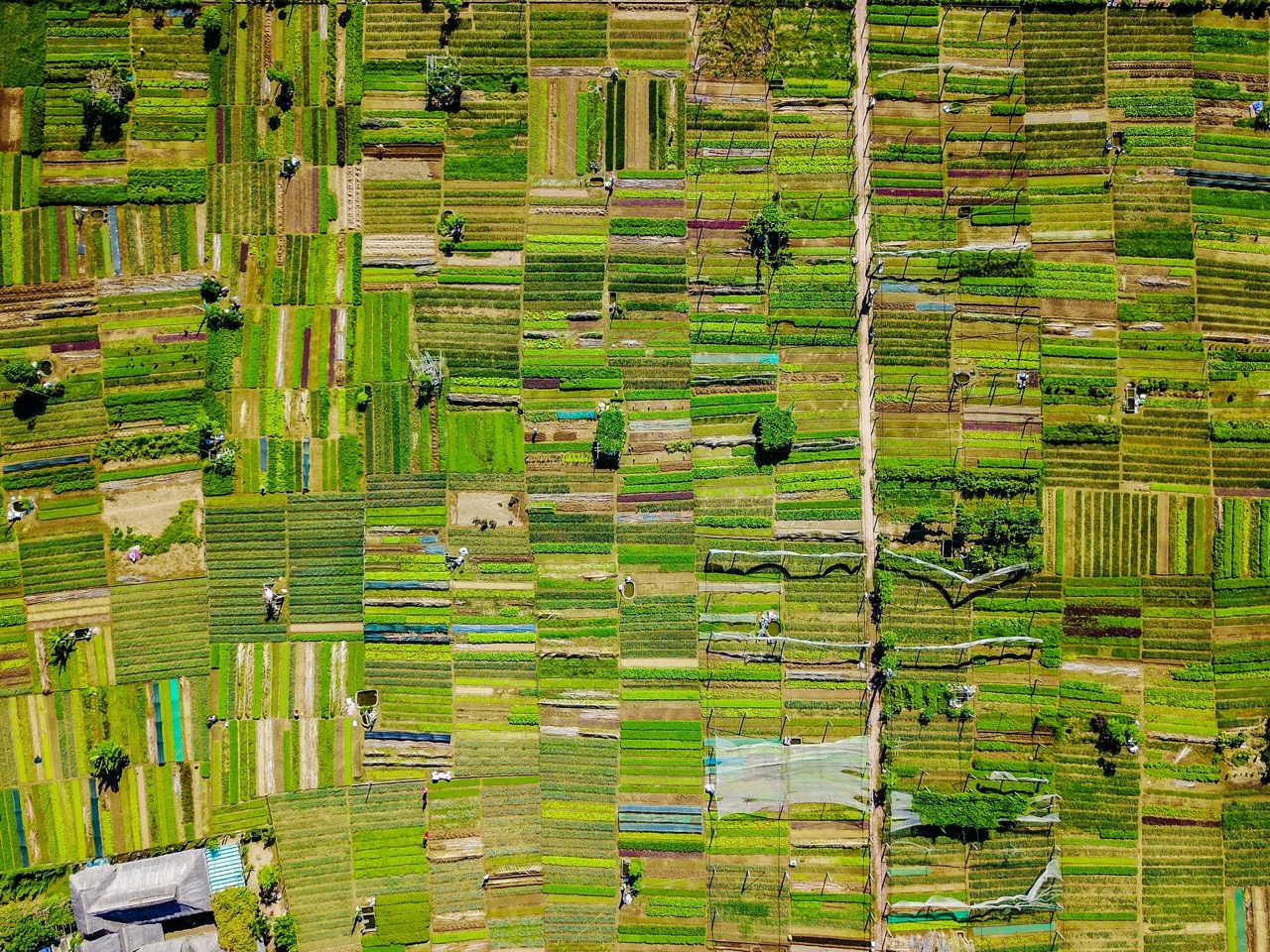A landmark of Boston, the Greater Boston Food Bank is the largest hunger relief organization in New England, and is one of the largest of its kind in the United States.

I got on the phone with Gary Roy, the Assistant Director of Public Relations at the Greater Boston Food Bank this past week, wanting to learn more about food insecurity and fresh food access in my home state.
The first topic of conversation: MEFAP– the Massachusetts Emergency Food Assistance Program.
“MEFAP works with approximately 850 emergency food programs served by FBCMA (The Food Bank Coalition of Massachusetts) to purchase and distribute nutritious foods and locally grown produce, and recently expanded to include locally sourced seafood to those in need across the Commonwealth.” - The Greater Boston Food Bank.
MEFAP consists of two food purchasing programs: Massachusetts Grown Initiative (year-round) and Core Food (July to June). The MassGrown Initiative was introduced into MEFAP to give food-insecure individuals access to fresh produce while simultaneously opening a new market for local farmers, while the Core Food assortment “[provides] a consistent supply of highly nutritious staple products with a focus on produce, protein, and dairy.” Together, MEFAP’s Core Food and Mass Grown program funding purchased 9 million pounds of food in 2022.
According to the MEFAP’s 2022 Fiscal Summary, food insecurity rates in Massachusetts remained high. Pre-pandemic, 1 in 4 households with children in the Commonwealth were food insecure. But due to the long-term impacts of the pandemic, these numbers only increased. In 2021, nearly 1 in 2 households with children in the Commonwealth were food insecure. As many as 1 in 3 adults faced food insecurity that same year. The number of SNAP (Supplemental Nutrition Assistance Program) benefit applicants has increased since the pandemic as well. As of January 2023, more than 1 million MA residents receive SNAP benefits each month. Overall, food insecurity in MA has increased nearly 70% since before the pandemic.
In 2022, “MEFAP accounted for 26.4% of statewide food bank distribution.” Their funding maintains that clients can access fresh, nutritious food and also supports local food suppliers, like Teddie Peanut Butter, which is located in Everett, MA. 42.4%, or $12.04 million of MEFAP’s funding is spent on Massachusetts based suppliers.
Other partners are experiencing higher demands than ever. The Family Pantry of Cape Cod recently spoke at an event, sharing how they are serving over 40% more people than last year – the largest they have ever seen. Most people coming through are the working families servicing the Cape’s tourism economy (and thus the MA revenue) – the landscapers, housekeepers, teachers, grocery clerks, servers, etc. The Salvation Army Chelsea Food Pantry now serves over 900 families, nearing their pandemic high of 1012 families in a single distribution back in August 2020. Lines outside of Boston’s American Red Cross Food Pantry stretched the length of two football fields, exceeding traffic from the worst periods of the pandemic.
David Andre, the director of Boston’s American Red Cross Food Pantry, called the combination of inflation and the cutoff of COVID-19 SNAP benefits a “hunger cliff.” In April of 2020, at the peak of the pandemic, 16.7 million adults were experiencing food insecurity, while 2.6 million adults were experiencing food insecurity in April of 2022.
Food insecurity across the United States remains a challenge, with the decrease in SNAP benefits as well as recent inflation trends. In Massachusetts, MEFAP critically responds to the need for food, especially fresh, local produce, meat, and seafood. Thanks to MEFAP funding, FBCMA would not have been able to distribute an unprecedented 134.2M pounds of food over the past year.
< Back
A landmark of Boston, the Greater Boston Food Bank is the largest hunger relief organization in New England, and is one of the largest of its kind in the United States.

I got on the phone with Gary Roy, the Assistant Director of Public Relations at the Greater Boston Food Bank this past week, wanting to learn more about food insecurity and fresh food access in my home state.
The first topic of conversation: MEFAP– the Massachusetts Emergency Food Assistance Program.
“MEFAP works with approximately 850 emergency food programs served by FBCMA (The Food Bank Coalition of Massachusetts) to purchase and distribute nutritious foods and locally grown produce, and recently expanded to include locally sourced seafood to those in need across the Commonwealth.” - The Greater Boston Food Bank.
MEFAP consists of two food purchasing programs: Massachusetts Grown Initiative (year-round) and Core Food (July to June). The MassGrown Initiative was introduced into MEFAP to give food-insecure individuals access to fresh produce while simultaneously opening a new market for local farmers, while the Core Food assortment “[provides] a consistent supply of highly nutritious staple products with a focus on produce, protein, and dairy.” Together, MEFAP’s Core Food and Mass Grown program funding purchased 9 million pounds of food in 2022.
According to the MEFAP’s 2022 Fiscal Summary, food insecurity rates in Massachusetts remained high. Pre-pandemic, 1 in 4 households with children in the Commonwealth were food insecure. But due to the long-term impacts of the pandemic, these numbers only increased. In 2021, nearly 1 in 2 households with children in the Commonwealth were food insecure. As many as 1 in 3 adults faced food insecurity that same year. The number of SNAP (Supplemental Nutrition Assistance Program) benefit applicants has increased since the pandemic as well. As of January 2023, more than 1 million MA residents receive SNAP benefits each month. Overall, food insecurity in MA has increased nearly 70% since before the pandemic.
In 2022, “MEFAP accounted for 26.4% of statewide food bank distribution.” Their funding maintains that clients can access fresh, nutritious food and also supports local food suppliers, like Teddie Peanut Butter, which is located in Everett, MA. 42.4%, or $12.04 million of MEFAP’s funding is spent on Massachusetts based suppliers.
Other partners are experiencing higher demands than ever. The Family Pantry of Cape Cod recently spoke at an event, sharing how they are serving over 40% more people than last year – the largest they have ever seen. Most people coming through are the working families servicing the Cape’s tourism economy (and thus the MA revenue) – the landscapers, housekeepers, teachers, grocery clerks, servers, etc. The Salvation Army Chelsea Food Pantry now serves over 900 families, nearing their pandemic high of 1012 families in a single distribution back in August 2020. Lines outside of Boston’s American Red Cross Food Pantry stretched the length of two football fields, exceeding traffic from the worst periods of the pandemic.
David Andre, the director of Boston’s American Red Cross Food Pantry, called the combination of inflation and the cutoff of COVID-19 SNAP benefits a “hunger cliff.” In April of 2020, at the peak of the pandemic, 16.7 million adults were experiencing food insecurity, while 2.6 million adults were experiencing food insecurity in April of 2022.
Food insecurity across the United States remains a challenge, with the decrease in SNAP benefits as well as recent inflation trends. In Massachusetts, MEFAP critically responds to the need for food, especially fresh, local produce, meat, and seafood. Thanks to MEFAP funding, FBCMA would not have been able to distribute an unprecedented 134.2M pounds of food over the past year.
“The Hunger Cliff” and MEFAP Funding’s Crucial Role
A landmark of Boston, the Greater Boston Food Bank is the largest hunger relief organization in New England, and is one of the largest of its kind in the United States.

I got on the phone with Gary Roy, the Assistant Director of Public Relations at the Greater Boston Food Bank this past week, wanting to learn more about food insecurity and fresh food access in my home state.
The first topic of conversation: MEFAP– the Massachusetts Emergency Food Assistance Program.
“MEFAP works with approximately 850 emergency food programs served by FBCMA (The Food Bank Coalition of Massachusetts) to purchase and distribute nutritious foods and locally grown produce, and recently expanded to include locally sourced seafood to those in need across the Commonwealth.” - The Greater Boston Food Bank.
MEFAP consists of two food purchasing programs: Massachusetts Grown Initiative (year-round) and Core Food (July to June). The MassGrown Initiative was introduced into MEFAP to give food-insecure individuals access to fresh produce while simultaneously opening a new market for local farmers, while the Core Food assortment “[provides] a consistent supply of highly nutritious staple products with a focus on produce, protein, and dairy.” Together, MEFAP’s Core Food and Mass Grown program funding purchased 9 million pounds of food in 2022.
According to the MEFAP’s 2022 Fiscal Summary, food insecurity rates in Massachusetts remained high. Pre-pandemic, 1 in 4 households with children in the Commonwealth were food insecure. But due to the long-term impacts of the pandemic, these numbers only increased. In 2021, nearly 1 in 2 households with children in the Commonwealth were food insecure. As many as 1 in 3 adults faced food insecurity that same year. The number of SNAP (Supplemental Nutrition Assistance Program) benefit applicants has increased since the pandemic as well. As of January 2023, more than 1 million MA residents receive SNAP benefits each month. Overall, food insecurity in MA has increased nearly 70% since before the pandemic.
In 2022, “MEFAP accounted for 26.4% of statewide food bank distribution.” Their funding maintains that clients can access fresh, nutritious food and also supports local food suppliers, like Teddie Peanut Butter, which is located in Everett, MA. 42.4%, or $12.04 million of MEFAP’s funding is spent on Massachusetts based suppliers.
Other partners are experiencing higher demands than ever. The Family Pantry of Cape Cod recently spoke at an event, sharing how they are serving over 40% more people than last year – the largest they have ever seen. Most people coming through are the working families servicing the Cape’s tourism economy (and thus the MA revenue) – the landscapers, housekeepers, teachers, grocery clerks, servers, etc. The Salvation Army Chelsea Food Pantry now serves over 900 families, nearing their pandemic high of 1012 families in a single distribution back in August 2020. Lines outside of Boston’s American Red Cross Food Pantry stretched the length of two football fields, exceeding traffic from the worst periods of the pandemic.
David Andre, the director of Boston’s American Red Cross Food Pantry, called the combination of inflation and the cutoff of COVID-19 SNAP benefits a “hunger cliff.” In April of 2020, at the peak of the pandemic, 16.7 million adults were experiencing food insecurity, while 2.6 million adults were experiencing food insecurity in April of 2022.
Food insecurity across the United States remains a challenge, with the decrease in SNAP benefits as well as recent inflation trends. In Massachusetts, MEFAP critically responds to the need for food, especially fresh, local produce, meat, and seafood. Thanks to MEFAP funding, FBCMA would not have been able to distribute an unprecedented 134.2M pounds of food over the past year.
.png)






.svg)
.svg)
.svg)